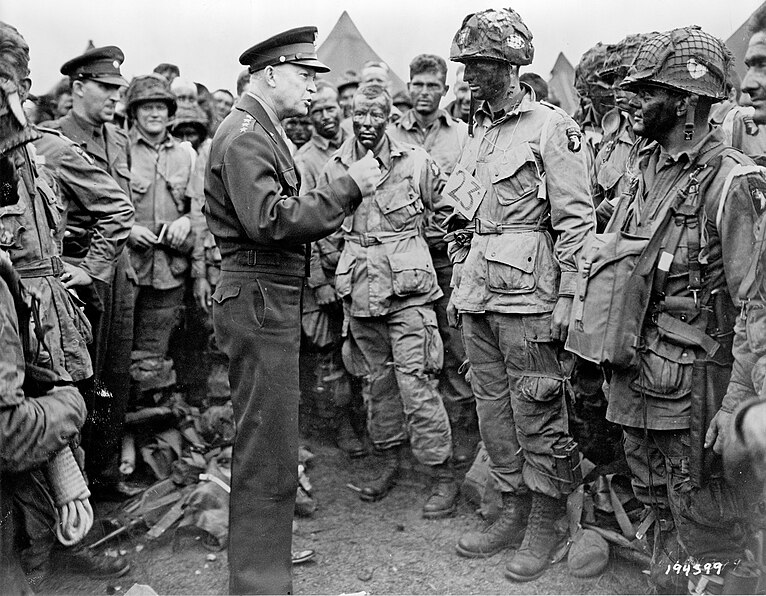By Ryan Holiday
June 6, 2017

Gen. Dwight D. Eisenhower gives the order of the Day. 'Full victory-nothing less' to paratroopers in England, just before they board their airplanes to participate in the first assault in the invasion of the continent of Europe. Eisenhower is meeting with US Co. E, 502nd Parachute Infantry Regiment (Strike) of the 101st Airborne Division, photo taken at Greenham Common Airfield in England about 8:30 p.m. on June 5, 1944.
On June 6th 1944, Dwight D. Eisenhower pulled off the most stunning and impressive invasion in military history. A total of 156,000 Allied troops invaded the beaches of Normandy and by June 11 more than 326,000 troops had crossed with over 100,000 tons of military equipment. One of those men was my grandfather.
Eisenhower’s critics often harped that he was more of an organizer than a leader. But it was in the days after D-Day that Eisenhower illustrated one of the most profound and clear moments of leadership — an example that entrepreneurs can follow.
After their hard-won initial successes, the Allied troops became bogged down in the hedgerows of France. These obstacles — half earth, half hedge, sometimes 15 feet tall — plus the reality of coordinating that many men and so much material created a temporary stall, allowing the Germans to wage a series of counteroffensives — a final blitzkrieg of some 200,000 men.
The German blitzkrieg was one of the most intimidating and shocking developments in modern warfare. At the beginning of World War II, columns of Panzer tanks rushed into Poland, the Netherlands, Belgium and France with devastating results and little opposition. In most cases, the commanders confronted by the Germans simply surrendered rather than face what felt to them like an invincible, indefatigable monster bearing down.
The blitzkrieg strategy was designed to exploit the flinch. The Allied forces would collapse at the sight of what appeared to be overwhelming force. Its success depended completely on such a response. The military strategy worked because the set-upon troops saw the offensive force as an enormous obstacle.
Click on the link below to read the rest of the article:
No comments:
Post a Comment